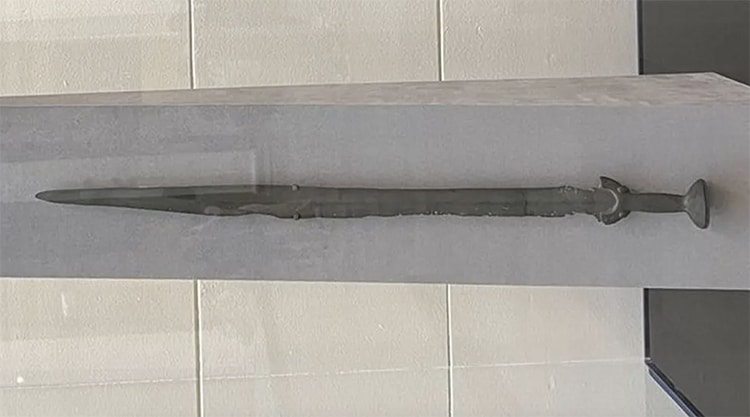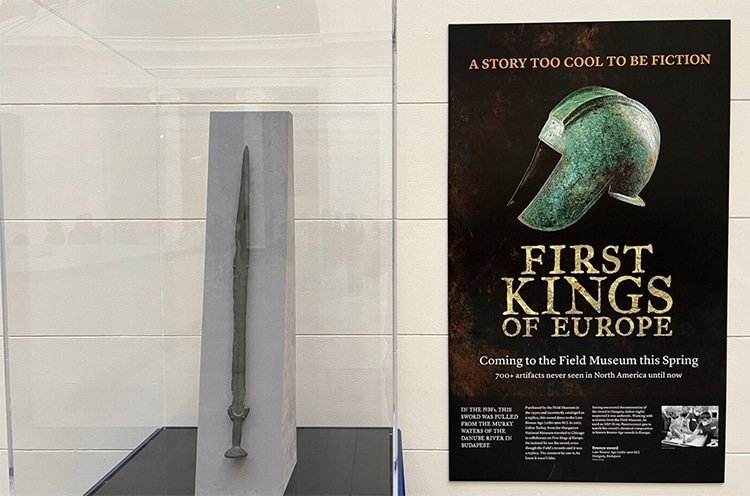The formerly fake sword.
(Photo:Field Museum)
Hoaxes abound in archeology.
Sometimes a fake object successfully masquerades as real for many years before the truth is uncovered.

The formerly “fake” sword. (Photo:Field Museum)
But in one instance, the opposite happened.
However, new scientific testing has revealed the sword is, in fact, an authentic 3000-year-old sword.
The sword was discovered in the Danube River in Budapest, Hungary, in the 1930s.

The sword on display at the Field Museum. (Photo:Field Museum)
Scholars at the time thought it was a replica of an ancient swordwell-crafted, but inauthentic.
While preparing an exhibit at the museum entitledFirst Kings of Europe, Hungarian archeologists asked to examine the sword.
They did so using a technology called an X-ray fluorescence detector.
The machine emits x-rays, exposing the metal object which is the target of the study.
By measuring this radiation, the researchers can identify the materials within the object.
The sword turned out to be a mix of bronze, copper, and tin.
This composition is incredibly similar to other Bronze age swords, unlike replicas.
This signature mix of metals surprised researchers, proving the sword is, in fact, real.
What we think is an original turns out to be a fake.
The weapon dates to the Bronze Age, the period generally described as between 3300 BCE and 1000 BCE.
Metalworking and longtrade networksacross Europe brought luxury goods to nobles across Europe.
It can now be seen on view at the entrance toThe First Kings of Europeexhibition at theField Museum.
The sword on display at the Field Museum.